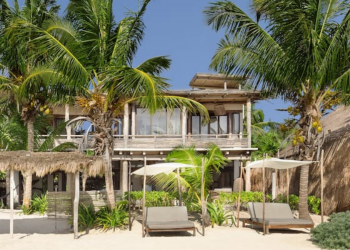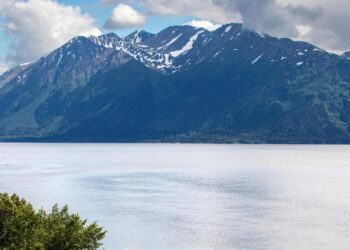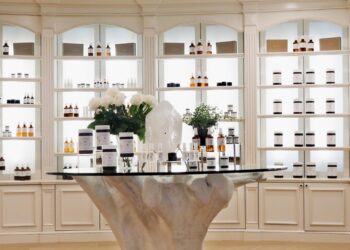If Barcelona — with its beautiful beaches, stunning spiral architecture, and exquisite cuisine — was a work of art, it would be a (Pablo) Picasso. Or (Antoni) Gaudí. Both artists have left their signature mark on this vibrant city by the Balearic Sea. While there’s enough to see, do, eat, and experience (including getting blissfully lost wandering the labyrinth streets) to encompass a weeklong stay, it is possible to cover the ‘best-of’’ this exuberant, work-of-art city in a mere 72 hours. Here’s how.
The Art Forms
Museu Picasso of Barcelona
Set in not one, but (in true Picasso style) five palaces in Barcelona’s El Born neighborhood, the Picasso Museum was actually built when the artist was alive and thus houses the most extensive collection of his works. Picasso moved to Barcelona when he was a boy (14) and continued to return throughout his life. The museum — with its Gothic archways, painted ceilings, and white studios — offers great insight into Picasso’s evolution from his classically trained roots to avant garde Cubist. Here you will find many of his early and lesser-known works. There are even 41 ceramic pieces (who knew?) that he created and were donated by his widow and muse, Jacqueline Roque.
Gaudí Open-Air City Museum
Trying to corral the mastery of surreal architect Antoni Gaudí into one location (or even structure) is impossible. His tribute museum is Barcelona itself, with masterpieces on every corner. Renowned for his Catalan Modernism style, Gaudí’s most famous works include the Sagrada Família, Park Güell, and Casa Batlló.
Sagrada Familia: No trip to Barcelona is complete without a stop by Gaudí’s famed cathedral even if just to stroll by the exquisite exterior (although a tour of the interior to see the vaults and jewel-popping stained glass is well worth the wait). Considered his most important work, Gaudí devoted more than 40 years to designing the extraordinary ‘unfinished church.’ Construction began in 1882 (under a different architect). Gaudí took over the project a year later, combining Gothic and art Nouveau forms. At the time of Gaudí’s death (in 1926), the church was less than a quarter complete. While the latest projected end date is 2026, many speculate it will never truly be ‘finished.’
Casa Battló
Textile industrialist Josep Batlló commissioned Gaudí to design this exquisite and unusual home after seeing Park Güell. The initial charge was to demolish the existing building, but the architect refused. Instead, using shards of stained glass, stone and ceramics, he transformed the exterior into a marine-inspired facade that changes colors with the light. Balconies were created from a single piece of cast iron in the shape of masks; the large windows are oval shaped; and the roof resembles scales of a dragon’s back.
Park Güell
This fantastical green park, sprinkled lavishly with mosaics, started as a project between Eusebi Güell and Gaudí. The original idea (a community with houses) never materialized, but the park and two homes were completed. Far from typical, Park Güell is most known for its spiral towers and now-famous mosaic lizard and wavy wall. The park is also home to the pink Casa Museu Gaudí, where the architect lived for nearly two decades and now houses a collection of his furniture and personal items. Definitely make time for a tour.
Best Stays
Intercontinental Barcelona
After taking in the exquisite art, head to the uber-modern Intercontinental Barcelona for the city’s most luxurious stay. Overlooking the harbor in the Montjuic section, this stylish hotel is inspired by both the Mediterranean Sea and Barcelona’s famed architecture. We love the color palette — blues, ochre and neutral tones — and stunning city views.
Fun Fact: Rooms here are the largest in the city.
We also love Kimpton Vividora:
Tucked away on a quiet pedestrian street in Barcelona’s famed Gothic Quarter, this chic boutique hotel feels more like an upscale apartment. The city’s seaside setting is reflected in a cascade of glass lamps in the lobby and by the presence of deep Mediterranean blues throughout, while earthy tones pay homage to Barcelona’s urban landscape.
Fun Fact: If fur babies fit in the elevator, they are welcome, no matter the size, weight, or breed.
Good Eats
In a city of Michelin stars (24, last count), Barcelona is a foodie’s dream. While every type of cuisine is on the menu here (Thai, Italian, Mexican, Indian, French, Argentine, Moroccan, Vietnamese), be sure to try the region’s specialties: paella, tapas, Serrano ham. A few of our favorite eats:
Restaurant 7 Portes: a Barcelona staple, known for its authentic Catalan cuisine, including paella and ‘endangered dishes’ – fish and seafood, cooked with centuries-old recipes.
Quirat: Intercontinental Barcelona’s signature restaurant, headed by Victor Torres, the youngest chef in Spain (at age 25) ever to achieve a Michelin star. Go all out on the 9- or 12-course tasting menu.
Els Quatre Gats – Originally opened in 1896, this art nouveau-style cafe – specializing in Catalan cuisine – reportedly served both Gaudí and Picasso (who at age 17, held his first exhibit here). Photos of the artists remain, alongside sketches by Picasso.
BarMut: Said to be actor Robert DeNiro’s favorite spot when in town, this small bar loaded with Spanish wine, offers a chalkboard menu that changes daily, alongside excellent tapas.
Make Time to:
Walk the Gothic Quarter: Get blissfully lost in Barcelona’s oldest quarter, wander the cobblestone labyrinth streets and courtyards.
Relax on the Beach: Home to miles of coastline, Barcelona offers a plethora of beach options — nine to be exact — from vibrant Barceloneta, its most famous and celebrated for its vibey bars and cafes, to more tranquil Caldetes.
Visit La Boqueria: Founded in 1217, Barcelona’s oldest market is foodie heaven. Hundreds of food stalls spill with cheese, olive oil, churros, tapas, and wine.
Feature image courtesy of Unsplash







